QuestionMy toy poodle is 5yrs old and a female. She barks and whins when I have to leave and she also jumps up and wants me to hold her. She gets really neverous to. And she listen to me when I tell her to stay or sit when we are in the house, but when we go outside I can't take her off the leash much because she want listen to me all the time. She only listen to me when she wants to. Also when I take her riding in the car she has to have the window down. If it's not she scratches at th window button and whins and barks. She want sit still she lunges at cars that go by and hangs out the window. And if we slow down or stops she barks like crazy. She also barks alot and runs wild when people come over. Can you help me with any of this. I would take her mor places with me if only she would behave.
AnswerThe key to most behavior problems is approaching things using the dog's natural instincts. Dogs see all the people and dogs in the household as a pack with each having their own rank in the pack and a top dog. Life is much easier if the 2 legged pack members outrank the 4 legged ones. You can learn to play the role of top dog by reading some books or going to a good obedience class. A good obedience class or book is about you being top dog, not about rewarding standard commands with a treat. Start at http://www.dogsbestfriend.com/ For more on being top dog, see http://www.dogbreedinfo.com./topdogrules.htm
Too many people fail to obedience train little dogs because they are little dogs. This can be a big mistake because many of them are very strong willed and turn into 4 legged Napoleons.
"Come" needs to be taught as part of proper pack status and obedience. Start with a good 6' leather leash and a sturdy slip collar, the metal chain ones with the rings on each end. You want the shortest one that will go on and off easily. If you walk with the dog on the left, pull the chain through one loop forming a "P". Facing it, slip it over its head. The free end should come over the neck to the leash, and the other end should drop slack when there is no pull on the leash.
With the dog at the end of the leash, call its name and "Come" in a firm voice. If it comes, praise it lavishly and pet it. If it doesn't come, repeat the command and give the leash a light snap. Keep it up with firmer leash snaps until the dog does come. Do not forget the praise. Then switch to a longer leash or rope, about 25'. When it comes well on the longer leash, you should be able to go to off leash in a fenced area, etc. Once the dog is doing well, introduce come, treat. This is for emergencies only when the dog has gotten loose accidentally. Use it routinely and you will have nothing to fall back on when your dog is headed for a busy street. "Name, come treat!" is little different from the regular "Name, come!", except the dog gets a great treat when it comes. We are talking a hot dog, cheese, etc. much better than any treat you use routinely.
Relying on come to control most dogs loose outside is risky, and I do not recommend it. Dogs are individuals. Some can be trained to come when you have no way to enforce it, but some will never be completely reliable even for the most experienced trainers.
I think you should put the dog in a small crate anchored down in the back of the car. I think the plastic ones give the dog more of a safe, enclosed den feeling. Select a crate just big enough for the full grown dog to stretch out in. A dog that has not been crated since it was little, may take some work. Start out just putting its toys and treats in the crate. Praise it for going in. Feed it in the crate. It may take a while, but she will adjust to riding in the crate. It is much safer for both the dog and people in the car.

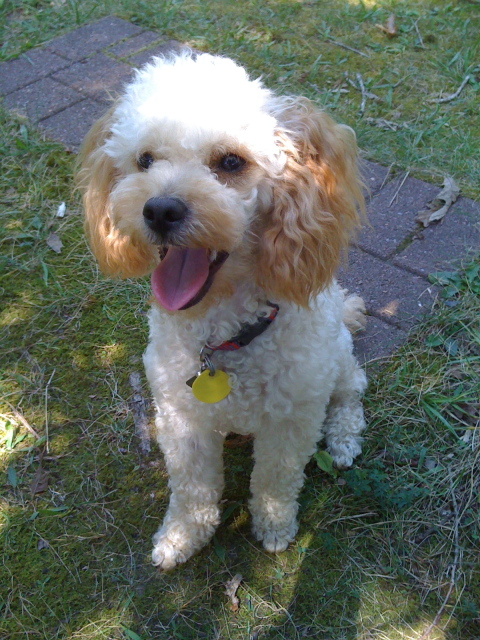 poodle continuing to vomit
Question
Oliver
Last week my 11 month old miniat
poodle continuing to vomit
Question
Oliver
Last week my 11 month old miniat
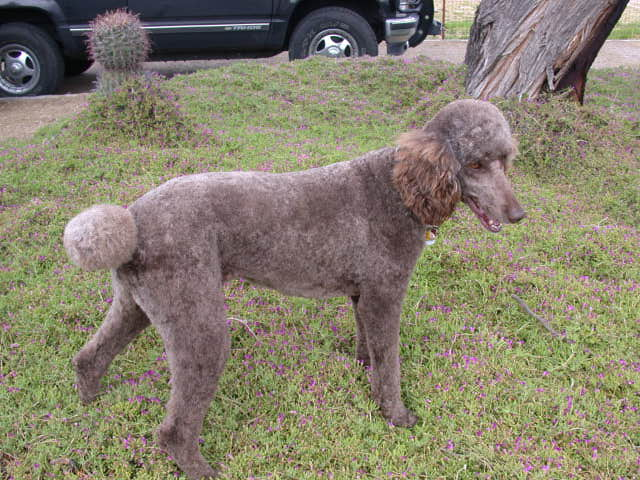 Odd Change in Hair Color
QuestionAbbey at 2
QUESTION: My chocolate standa
Odd Change in Hair Color
QuestionAbbey at 2
QUESTION: My chocolate standa
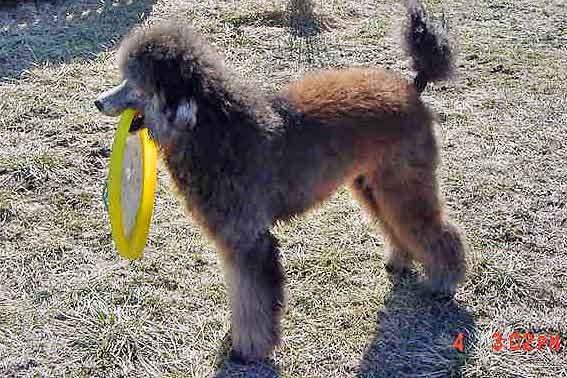 puppy colors
QuestionI have bred my standard poodle cream bitch with
puppy colors
QuestionI have bred my standard poodle cream bitch with
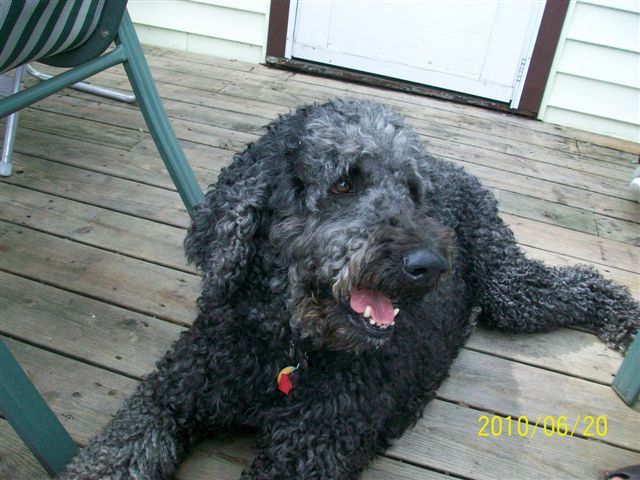 Haircut/face
Question
No-Shed Fred
We were very lucky to adopt a GRE
Haircut/face
Question
No-Shed Fred
We were very lucky to adopt a GRE
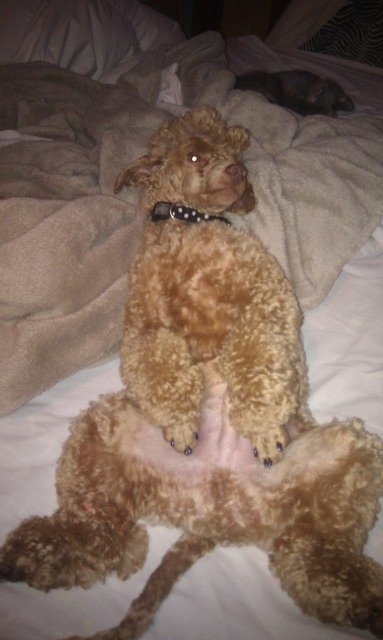 pogo poodle with seperation anxiety
Question
Banner
Hi, I have a 15 month old male d
pogo poodle with seperation anxiety
Question
Banner
Hi, I have a 15 month old male d